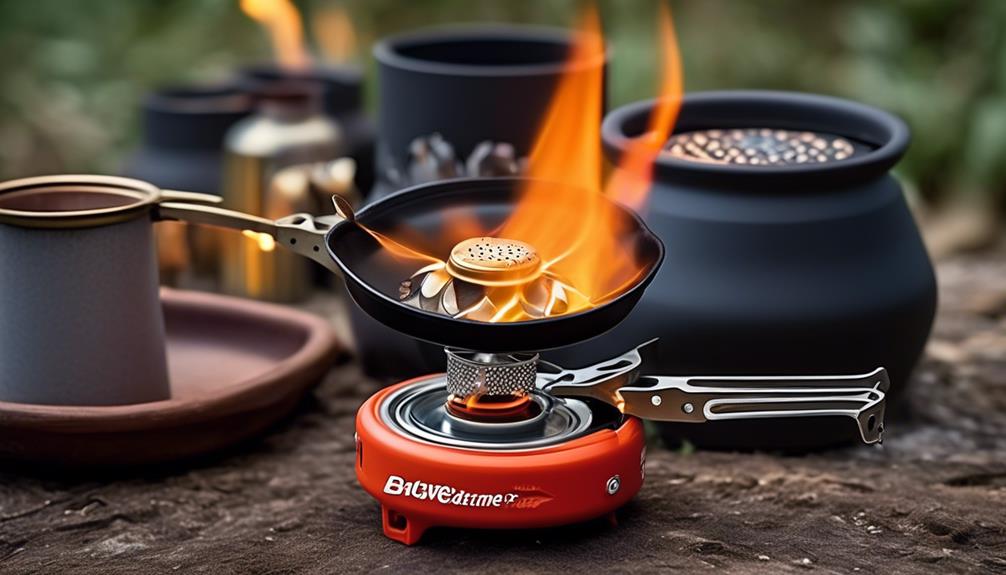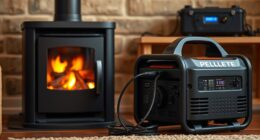
I have always found starting a fire in a wood stove to be both practical and calming. The crackling sounds of the flames and the cozy warmth they provide create a peaceful ambiance.
In this article, I’ll guide you through the process of gathering the right materials, preparing the wood stove, building the fire base, igniting the fire, and maintaining it.
So, let’s dive in and learn how to create the perfect fire in your wood stove.
Key Takeaways
- Gather small, dry twigs and branches for kindling and avoid damp or wet kindling.
- Use properly seasoned and stored firewood to avoid producing more smoke and less heat.
- Clean the wood stove before starting the fire by removing ash and debris and checking and opening the air vents for proper ventilation.
- Use dry and seasoned firewood, along with newspaper or fire starters, to ignite the fire while following safety precautions and having a fire extinguisher nearby.
Gathering the Right Materials
I’m gathering all the necessary firewood and kindling to start a cozy fire in my wood stove.
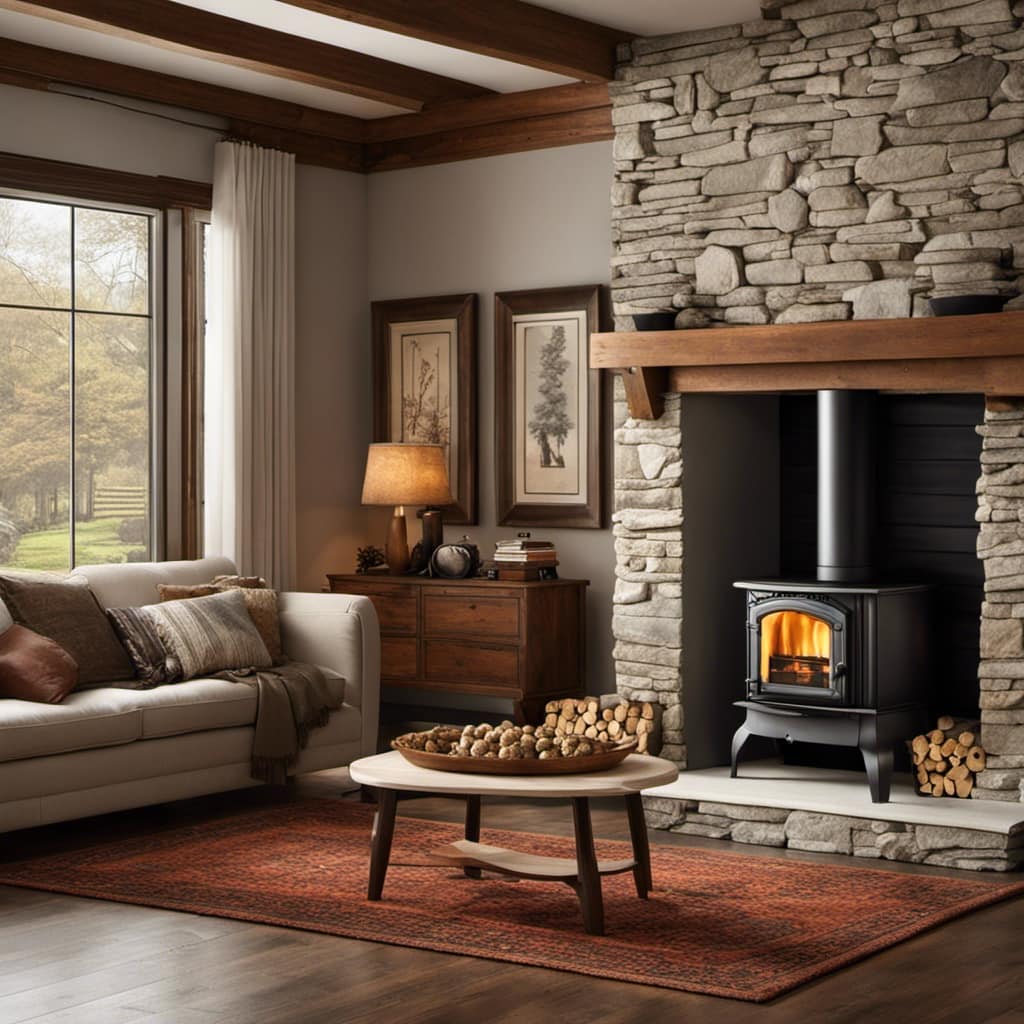
When it comes to selecting appropriate kindling, I look for small, dry twigs and branches that can easily catch fire and help ignite the larger logs.
It’s important to choose kindling that isn’t damp or wet, as this can make it difficult for the fire to start and maintain a steady burn.
Finding dry firewood is crucial for a successful fire. I make sure to collect wood that has been properly seasoned and stored in a dry area, as wet or green wood can produce more smoke and less heat.
Once I’ve gathered my kindling and firewood, I’m ready to move on to preparing the wood stove for a warm and comforting fire.

Preparing the Wood Stove
Before starting the fire, I carefully clean the wood stove and remove any ash or debris to ensure it’s ready for use. Cleaning the stove is an essential step in maintaining its efficiency and safety. I start by wearing protective gloves and using a metal scoop to gather the ash and debris from the stove. I make sure to dispose of it in a metal container that’s placed outside, away from any flammable materials.
Once the cleaning is done, I check for proper ventilation by opening the air vents and ensuring that they aren’t blocked. Proper ventilation is crucial for a clean and efficient burn.
With the stove cleaned and the ventilation checked, I’m now ready to move on to building the fire base.
Building the Fire Base
How do I properly build the fire base for a wood stove?
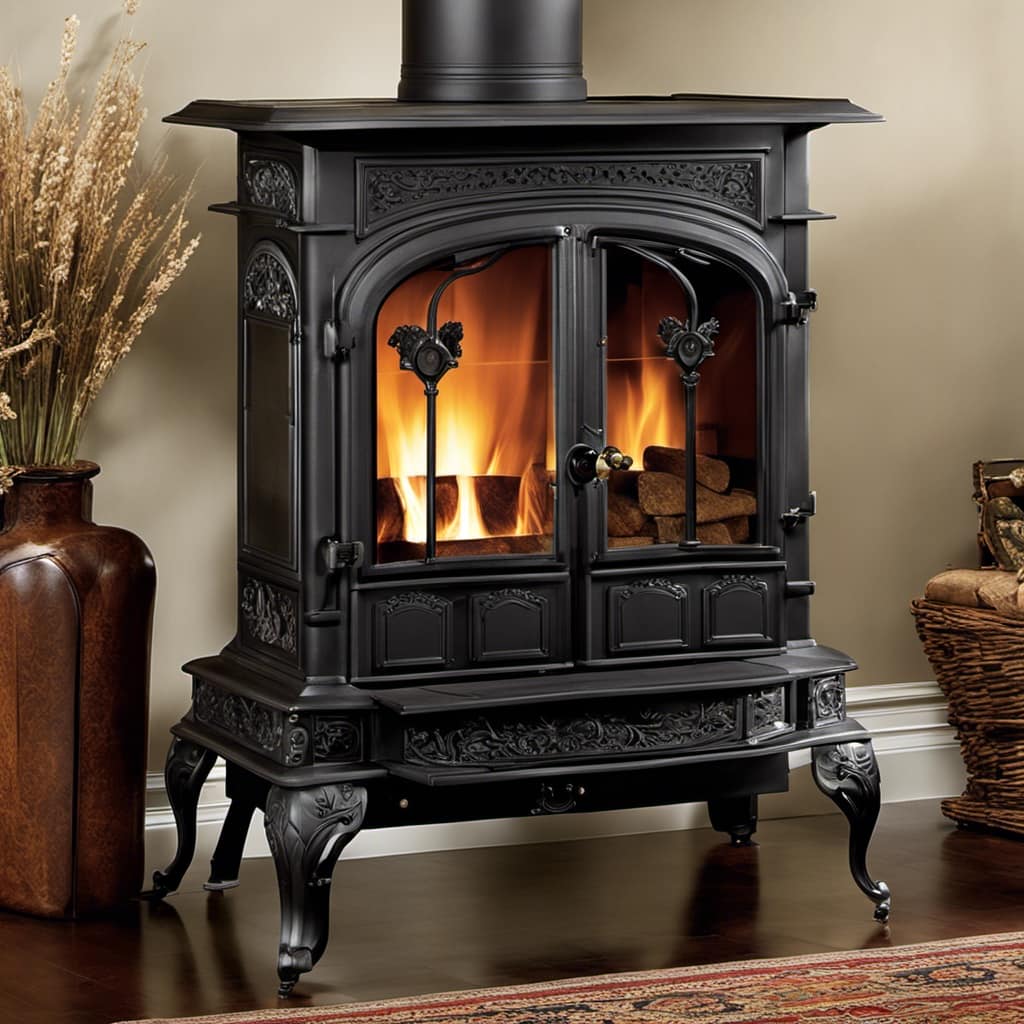
Building a solid fire base is crucial for efficient and safe wood stove operation.
To start, ensure you have chosen the right firewood, as this greatly affects the burning process. Opt for seasoned hardwood, like oak or maple, which burns hotter and longer than softwoods.
Begin by cleaning out any ash or debris from the firebox and open the damper fully.
Next, lay a bed of small, dry kindling in the firebox, ensuring proper airflow.

Then, stack larger pieces of firewood on top of the kindling, leaving gaps for air circulation. This promotes proper ventilation for optimal burning.
Finally, ignite the kindling from the bottom and gradually add larger pieces of firewood as the fire grows.
Igniting the Fire
After cleaning out the firebox and stacking the firewood, I carefully ignited the kindling. As the flames flickered, I added larger pieces of firewood to ignite the fire.
When it comes to lighting a fire in a wood stove, there are several techniques to ensure a successful ignition.

Firstly, it’s important to use dry and seasoned firewood. Wet or green wood can produce excess smoke and not burn efficiently.
Additionally, using a small amount of newspaper or fire starters as kindling can help ignite the fire more quickly.
It’s crucial to follow safety precautions when starting a fire. Keep a fire extinguisher nearby, wear protective gloves, and ensure proper ventilation in the room.
Maintaining and Tending the Fire
While tending the fire, I ensure that the flames are consistently fed with small pieces of firewood to maintain a steady burn.

As important as it’s to start a fire properly, maintaining it’s equally crucial for fire safety and efficiency.
One of the key aspects of tending the fire is to troubleshoot any issues that may arise. If the fire isn’t burning well, it could be due to a lack of oxygen. In this case, I adjust the air vents to allow more airflow.
Another common issue is when the firewood isn’t burning evenly. To address this, I reposition the logs, ensuring they’re closer to the center of the firebox.
Regularly monitoring the fire and addressing these troubleshooting techniques not only ensures a safe and consistent burn, but also maximizes the heat output of the wood stove.

Frequently Asked Questions
How Long Does It Typically Take for a Wood Stove Fire to Reach Its Optimal Temperature?
Typically, it takes about 30 minutes for a wood stove fire to reach its optimal temperature. It’s important to use dry hardwood like oak or maple for the best results.
Can I Use Any Type of Wood for My Wood Stove, or Are There Specific Types That Work Best?
I always make sure to use the right type of wood for my wood stove. Different types have different benefits, but seasoned wood is best. It burns cleaner and produces more heat.
Are There Any Safety Precautions I Should Take When Starting a Fire in a Wood Stove?
When starting a fire in a wood stove, it’s important to prioritize fire safety and prevent chimney fires. Taking precautions like using dry, seasoned wood and regularly cleaning the chimney can help ensure a safe and efficient fire.
How Often Should I Clean the Ash and Debris From My Wood Stove?
I clean the ash and debris from my wood stove every single day! It’s important to keep it clean to ensure efficient burning. As for wood, hardwoods like oak and maple work best.
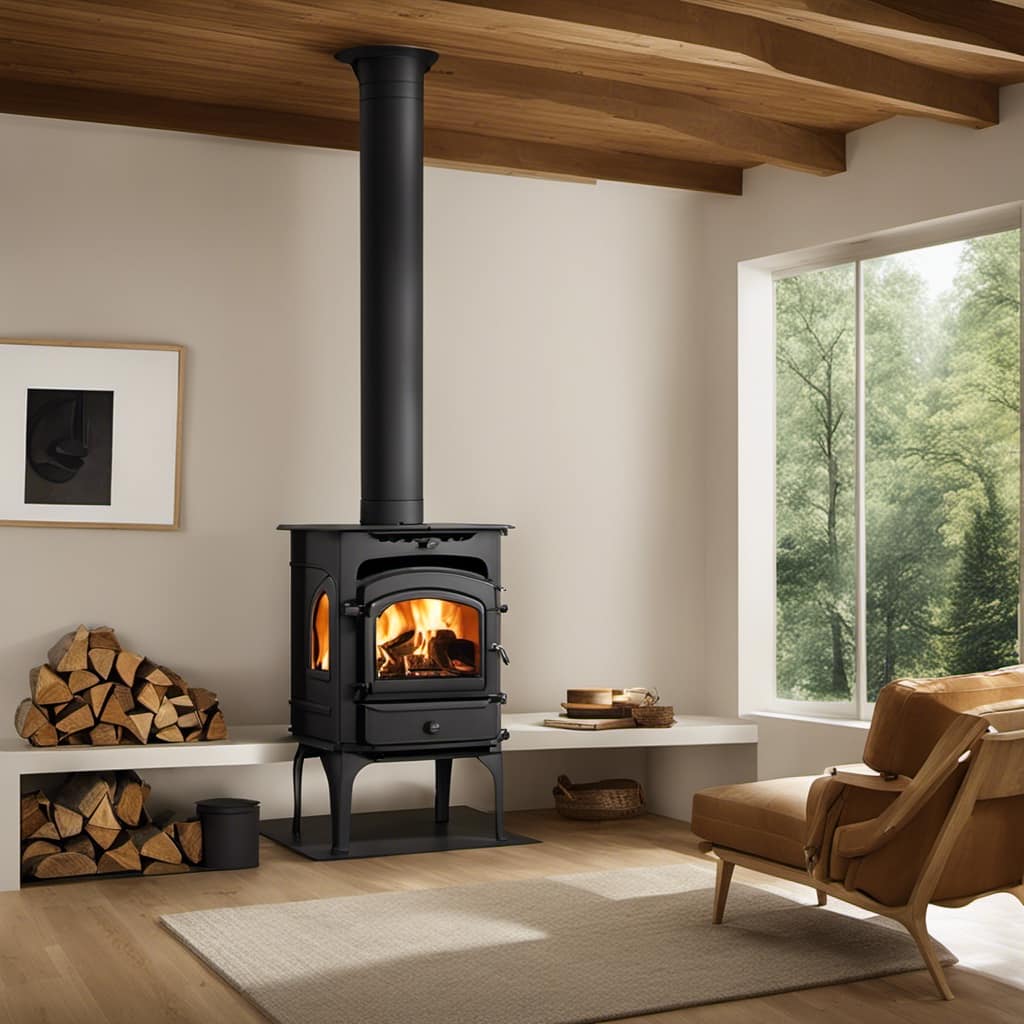
Is It Necessary to Have a Fire Extinguisher Nearby When Using a Wood Stove?
It’s essential to have a fire extinguisher nearby when using a wood stove. In case of emergencies, it provides a quick and effective way to suppress the fire. However, there are alternative fire starters available as well.
Conclusion
In conclusion, starting a fire in a wood stove requires the right materials, proper preparation, and careful maintenance.
By gathering dry kindling and fuel, preparing the stove with proper airflow, building a sturdy fire base, and igniting the fire using a reliable method, you can successfully start a cozy fire.
Remember to tend to the fire by adding fuel and adjusting airflow as needed.

Like a warm embrace on a chilly evening, a well-maintained wood stove fire can create a comforting atmosphere in your home.
Growing up surrounded by the vast beauty of nature, Sierra was always drawn to the call of the wild. While others sought the comfort of the familiar, she ventured out, embracing the unpredictable and finding stories in the heartbeat of nature.
At the epicenter of every remarkable venture lies a dynamic team—a fusion of diverse talents, visions, and passions. The essence of Best Small Wood Stoves is crafted and refined by such a trio: Sierra, Logan, and Terra. Their collective expertise has transformed the platform into a leading authority on small wood stoves, radiating warmth and knowledge in equal measure.





